When I saw the third weeks’ theme of 52weeksofcooking, I immediately knew what I wanted to make. The theme is Portuguese, and what better way to celebrate the Portuguese kitchen than to make classic pastéis de nata? I first got introduced to these delicious custard tarts when I visited Lisbon with friends. We went to the famous pastéis de nata shop in Belem and bought a box full of these little pastries. Then we sat down in a nearby park. The sun was shining, the pastries were still warm: heaven!
Quickly after my visit to Lisbon, my parents-in-law moved to Portugal. A visit there is not complete without going to the local bakery and getting some pastéis de nata with a pinch of cinnamon to enjoy with a good cup of coffee. Morning, afternoon, dessert, you can enjoy them any time of the day. For the challenge, I wanted to make them from scratch. That is why I did not only made the custard myself, but I also experimented with making puff pastry.
I used the recipe from ‘Leite’s Culinaria‘. Because I don’t own an oven that can be heated to 290°C, I adjusted the cooking time. I also adjusted the size of the pastéis. The puff pastry was a little difficult, and I could probably improve a bit by being more precise in the thickness of the dough and thickness of the butter layers in between. Still, they turned out to be almost perfect and I was very happy with the result.
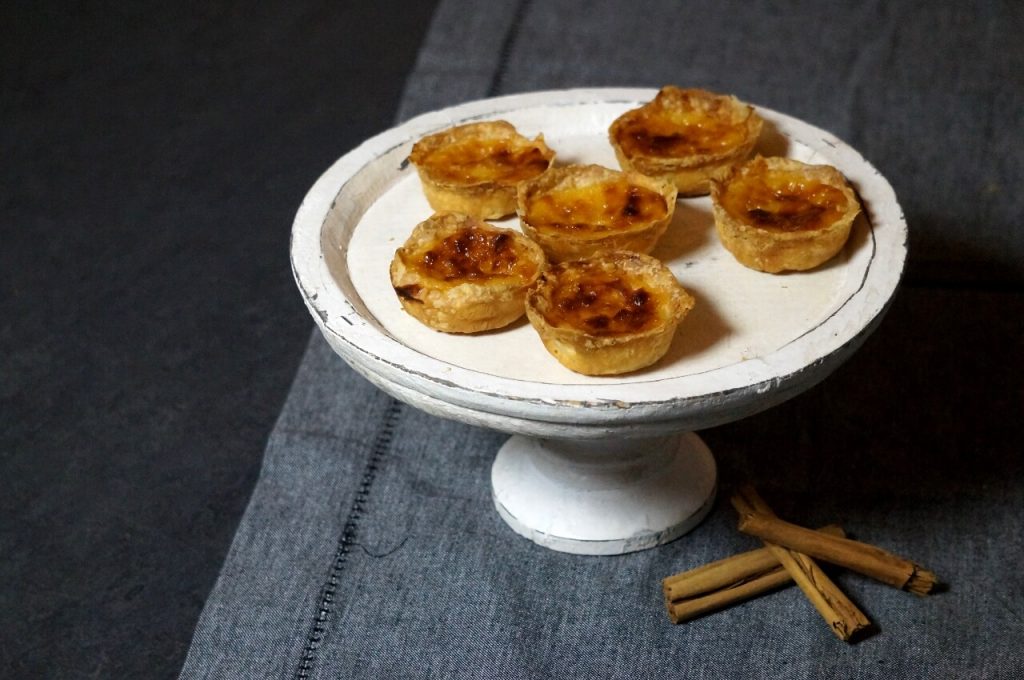
Pastéis de Nata
Serves about 25, takes about 3 hours and 30 minutes
Ingredients
Pastéis de nata dough
- 270 g all-purpose flour, plus more for the work surface
- 1/4 teaspoon sea salt (1 gram)
- 200 ml cold water
- 230 g unsalted butter, room temperature, stirred until smooth
Custard
- 27 g tablespoons all-purpose flour
- 300 ml milk, divided
- 265 granulated sugar
- 1 cinnamon stick
- 160 ml water
- 1/2 teaspoon vanilla extract
- 6 large egg yolks, whisked
For the garnish
- Confectioners’ sugar
- Cinnamon
Directions
Make the pastéis de nata dough
- In a stand mixer fitted with a dough hook, mix the flour, salt, and water about 30 seconds until a soft, pillowy dough forms. The dough should pull away from the side of the bowl.
- Generously flour a work surface and pat the dough into a 15 cm square using a pastry scraper. Flour the dough, cover with plastic wrap, and let it rest at room temperature for 15 minutes.
- Roll the dough into a 45 cm square. As you work, use the scraper to lift the dough to make sure the underside isn’t sticking to your work surface.
- Brush the excess flour off the top of the dough, trim any uneven edges, and, using a small spatula, dot and then spread the left 2/3 portion of the dough with a little less than 1/3 of the butter being careful to leave a 2 cm plain border around the edge of the dough.
- Neatly fold the unbuttered right 1/3 of the dough (using the pastry scraper to loosen it if it sticks) over the rest of the dough. Brush off any excess flour, then fold over the left 1/3 of the dough. Starting from the top, pat down the dough with your hand to release any air bubbles, and then pinch the edges of the dough to seal. Brush off any excess flour.
- Turn the dough 90° to the left so the fold is facing you. Lift the dough and flour the work surface. Once again roll it out to a 45 cm square, then dot the left 2/3 of the dough with 1/3 of the butter and smear it over the dough. Fold the dough as directed in steps 4 and 5.
- For the last rolling, turn the dough 90° to the left and roll out the dough to a 45 by 55 cm rectangle, with the shorter side facing you. Spread the remaining butter over the entire surface of the dough.
- Using the spatula as an aid, lift the edge of dough closest to you and roll the dough away from you into a tight log, brushing the excess flour from the underside as you go. Trim the ends and cut the log in half. Wrap each piece in plastic wrap and chill for 2 hours or preferably overnight.
Make the custard
- In a medium bowl, whisk the flour and 150 ml milk until smooth.
- Bring the sugar, cinnamon, and water to a boil in a small saucepan and cook until an instant-read thermometer registers 100°C. Do not stir.
- Meanwhile, in another small saucepan, scald the remaining 150 ml milk. Whisk the hot milk into the flour mixture.
- Remove the cinnamon stick and then pour the sugar syrup in a thin stream into the hot milk-and-flour mixture, whisking briskly. Add the vanilla and stir for a minute until very warm but not hot. Whisk in the yolks, strain the mixture into a bowl, cover with plastic wrap, and set aside. The custard will be thin; that is as it should be.
Assemble and bake the pastries
- Place an oven rack in the top third position and heat the oven to 230°C. Remove a pastry log from the refrigerator and roll it back and forth on a lightly floured surface until it’s about a 5 cm in diameter and 20 cm long. Cut it into 2 cm pieces. Place 1 piece of pastry dough, in each well of a nonstick 6-cup muffin pan. Allow the dough pieces to soften several minutes until pliable.
- Have a small cup of water nearby. Dip your thumbs in the water, then straight down into the middle of the dough spiral. Flatten it against the bottom of the cup, then smooth the dough up the sides. The pastry sides should be thinner than the bottom.
- Fill each cup 3/4 full with the slightly warm custard. Bake the pastéis until the edges of the dough are frilled and brown, about 20 to 25 minutes.
- Remove from the oven and allow the pastéis to cool a few minutes in the pan, then transfer to a rack and cool until just warm. Sprinkle the pasteís with confectioners’ sugar, then cinnamon and serve. Repeat with the remaining pastry and custard. These are best consumed the day they’re made.
Tip: You don’t have to make them all in one day! The pastry can be frozen for up to 3 months, and you can refrigerate the custard for up to 3 days.
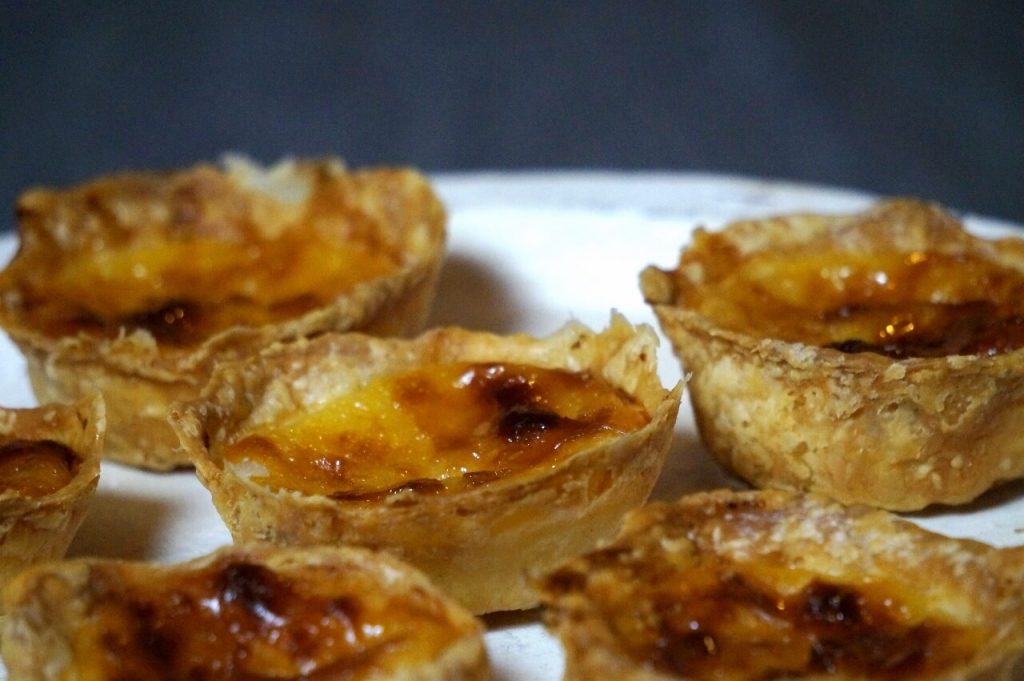


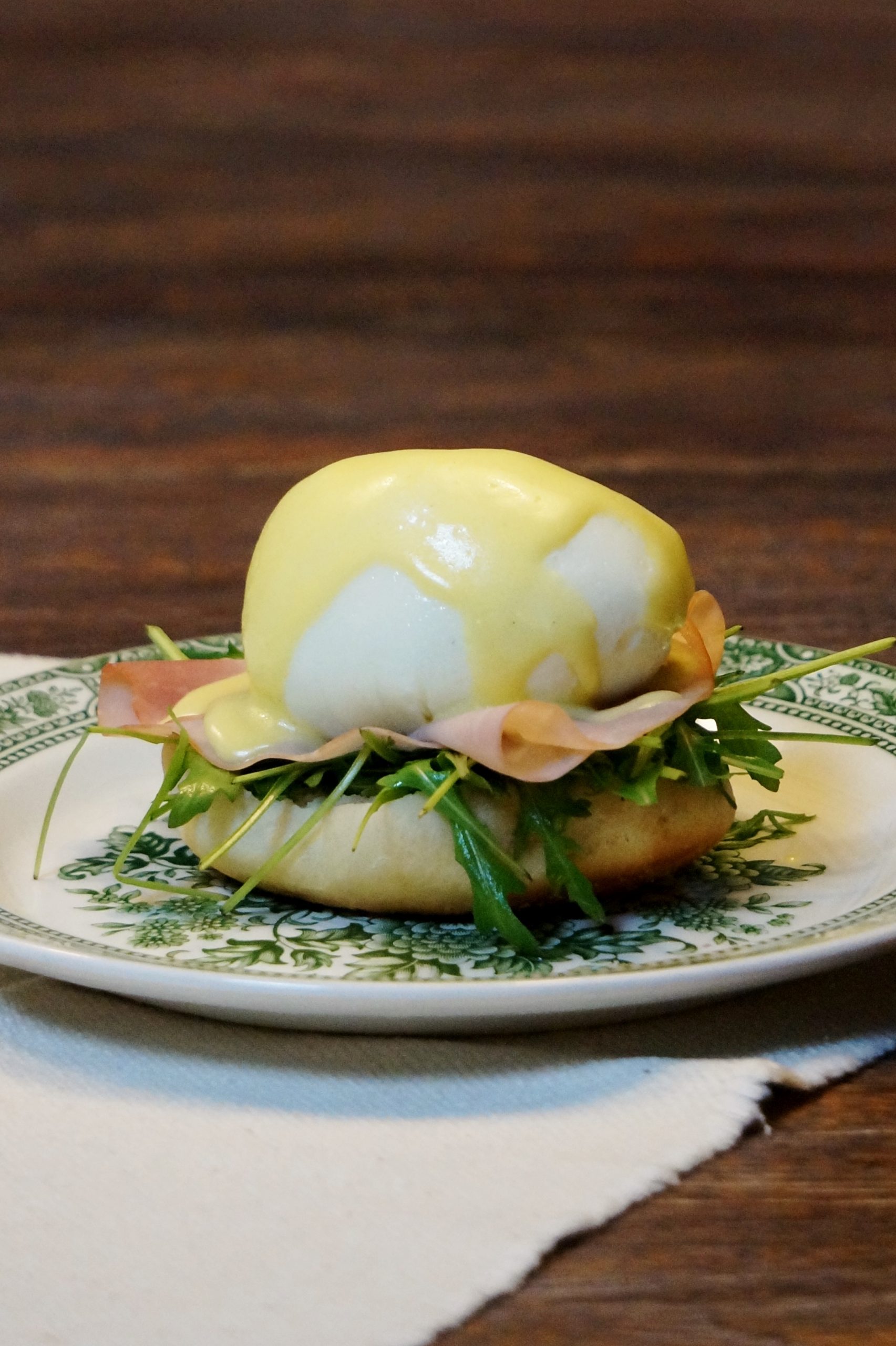
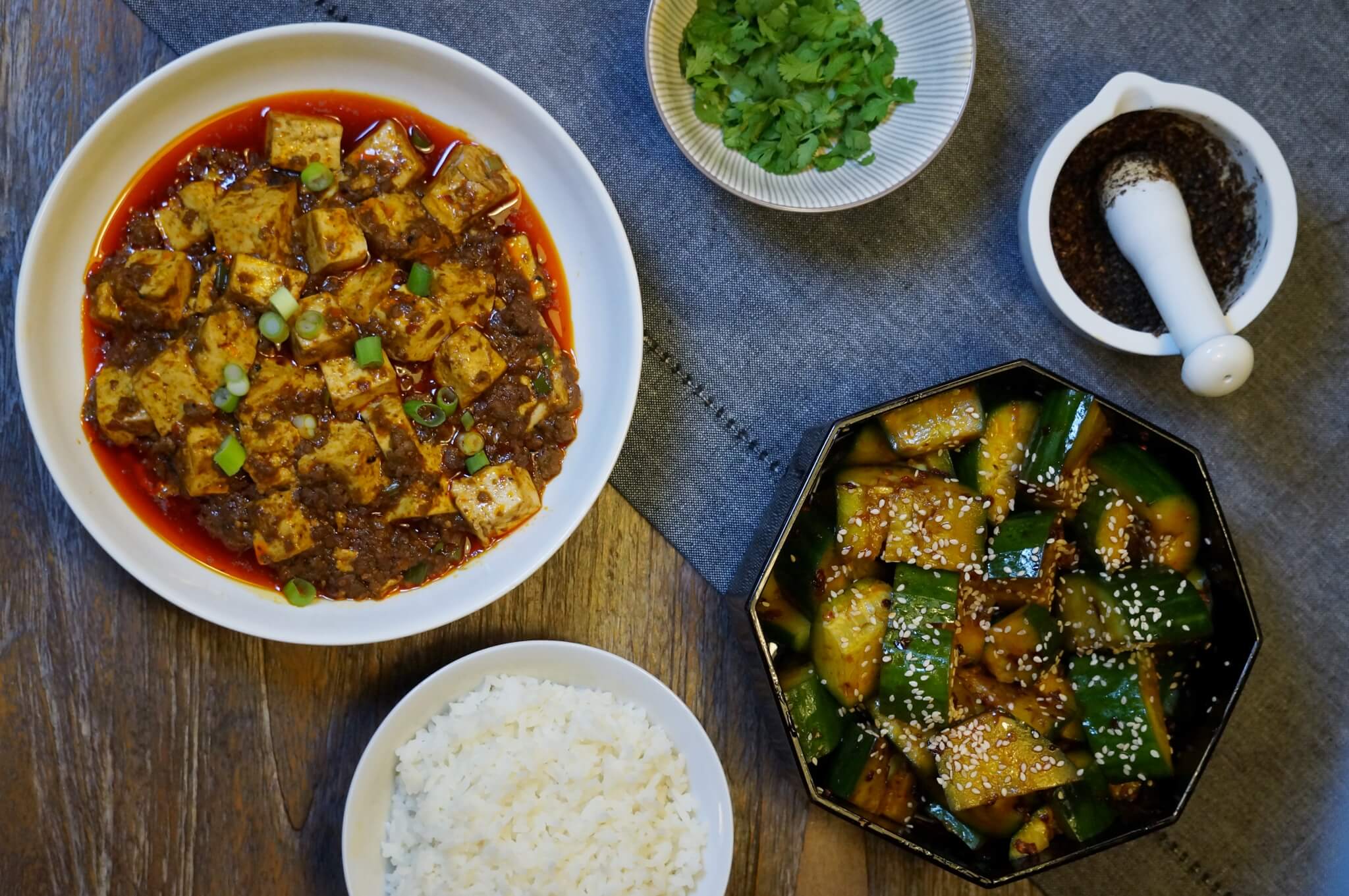
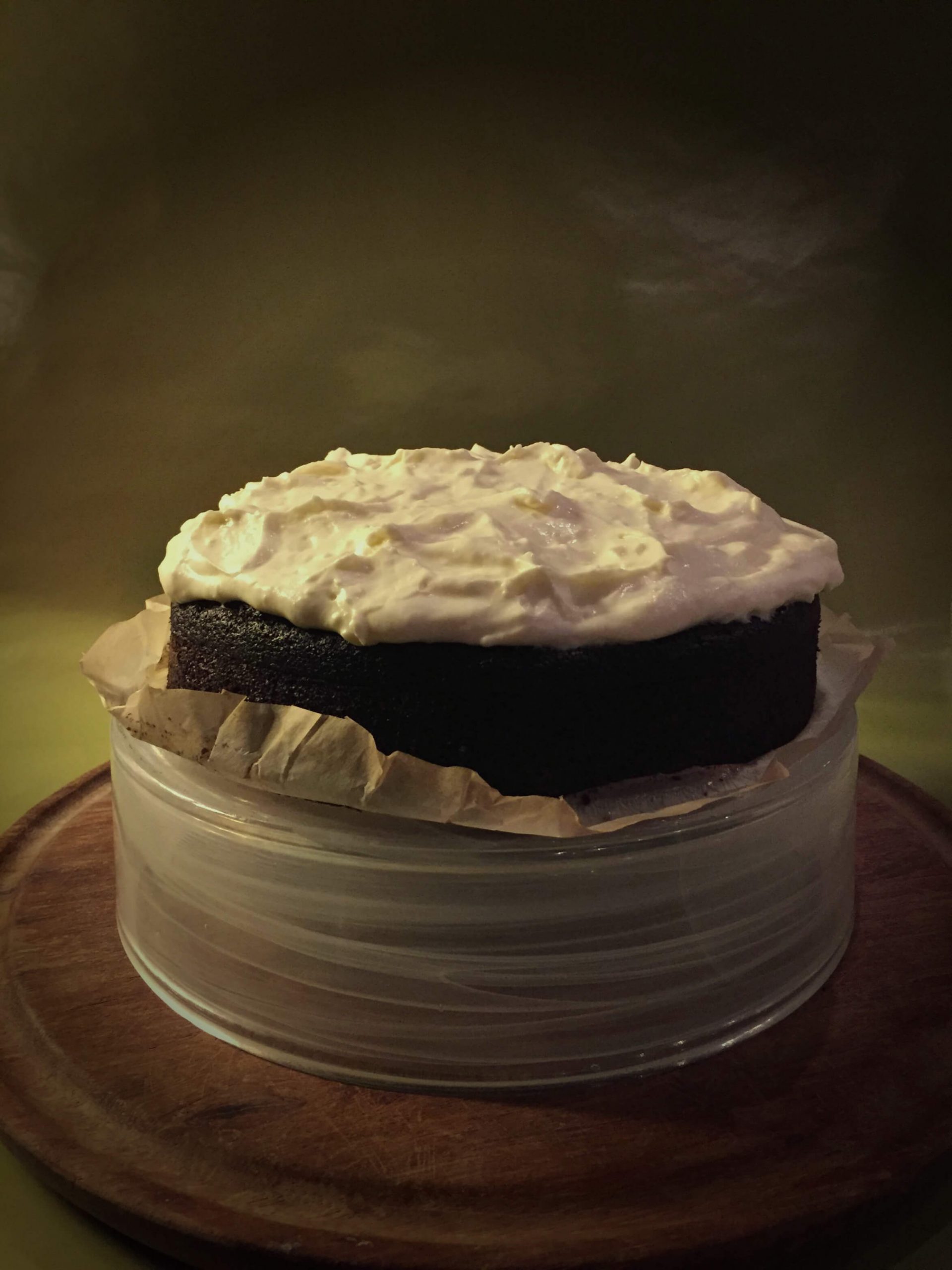
No Comments